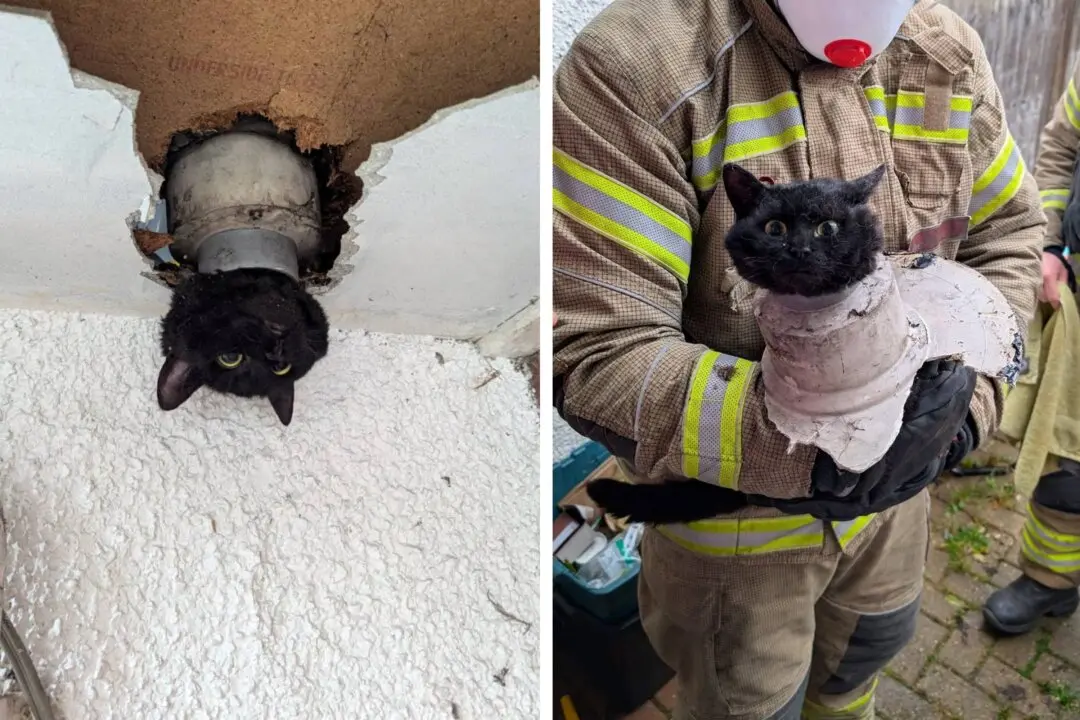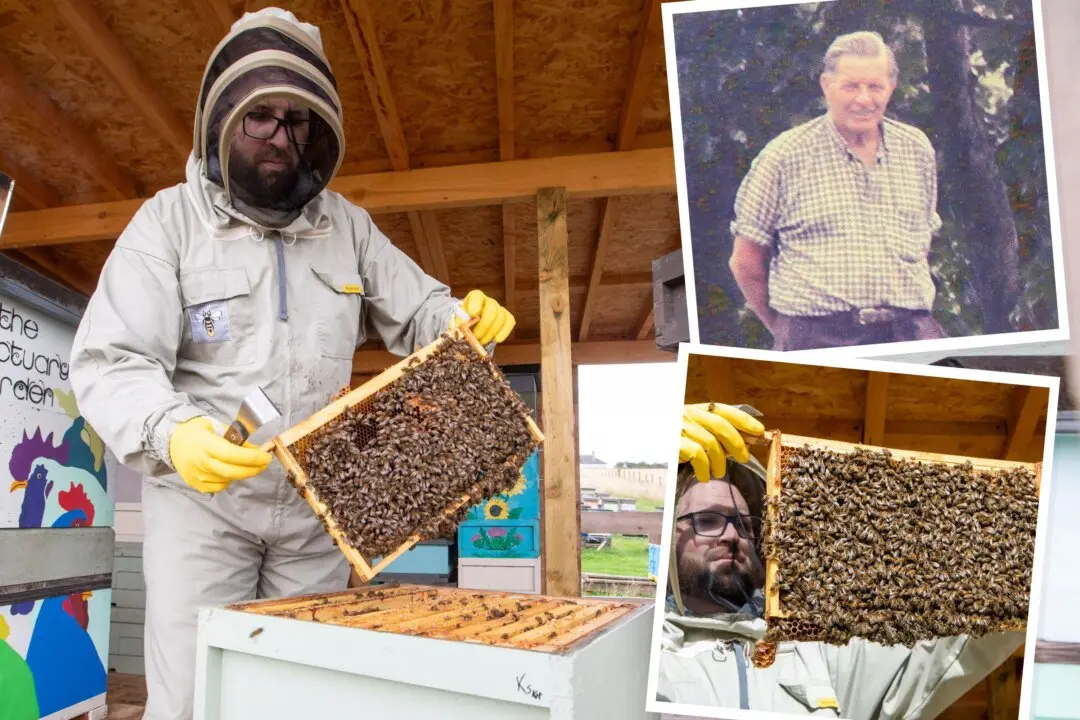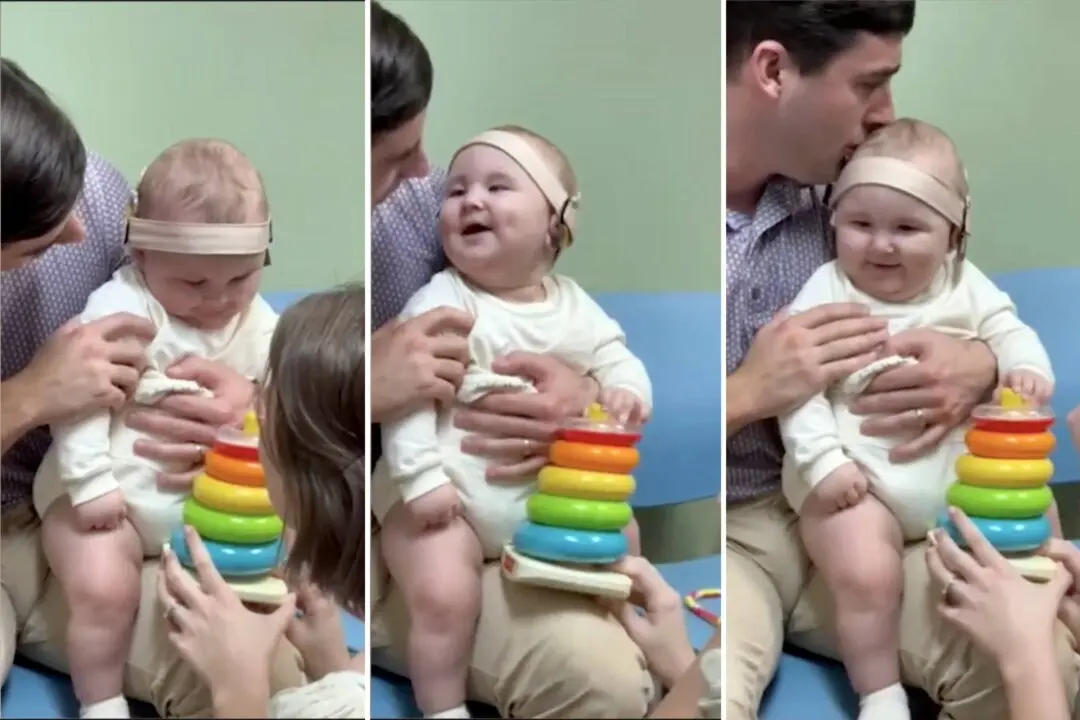As part of a 200-year-old tradition, a man is traveling 37,000 miles around the world, hand-delivering postcards that were left on a remote Pacific island.
Since setting off in March, the one-man delivery service has been knocking unannounced on the intended recipients’ doors—from the United States to Iceland to Brazil. Beardmore will continue his journey for 365 days across seven continents until he drops off his final letter on March 1, 2025.

Beardmore learned about the postbox tradition when he visited the island off the coast of Ecuador shortly after losing his father, Eric, to motor neurone disease in 2022.
The custom at the remote postbox was started by sailors in 1793 who would deposit letters for loved ones in the hope it might get picked up by a passing ship—and the location of the Galapagos postbox became famous as Post Office Bay. These days, tourists and travelers drop postcards in the whisky-cask-turned-postbox in the hopes someone will one day collect them and deliver them.
Beardmore is now carrying on the tradition, delivering 50 postcards to unsuspecting recipients across the globe in a bid to “connect the world—one letter at a time.”


So far, he has visited 12 countries: England, Scotland, Ireland, Iceland, the United States, Canada, Mexico, Belize, Guatemala, Brazil, Argentina, and Ecuador. Recipients have included a doctor in Sao Paulo, Brazil, a honeymooning couple in Washago, Canada, and someone’s beloved in San Pedro, Belize.
Beardmore, whose luggage is a single carry-on bag, turns up at the address on the postcard and waits for up to one full day, hoping to deliver it personally. If he can’t find the recipient, the postcard goes in the mailbox as “the Galapagos postman always delivers.”

Beardmore, who has just finished the UK leg of his journey, said: “The inspiration behind this is that my father passed away from MND [motor neurone disease] 18 months ago. He was 81. He had MND for eight years, which is a long time to survive.
“Through this project, I aim to reconnect people through the written word, emphasizing the personal touch that letters provide.
“I look for adventures and journeys with a purpose to them, and after COVID, I wanted to get back out there and see the world on a personal basis. And this is a pretty unique way to see the world.
“When my dad passed, I knew I wanted to do something in his memory, and I traveled to the Galapagos islands last January. We went to the postbox, but I'd never heard of it. I took some postcards back to London to deliver—and the experience was amazing.
“That’s where I got the idea of it. I just go where the cards take me.
“It’s a very sociable type of challenge; you want to try and find out the story behind each letter.
“The whole of this letterbox has interconnected webs around the entire world. The whole of this challenge is really about human connection. I’m trying to reconnect with the world ... And the whole idea of connection is important when it comes [to] MND, as sufferers lose their ability to talk.”

Touched by the experience, Beardmore again visited the islands in March and picked out a handful of letters, ensuring they were from all over the world. After rounding to an even 50, he set out for South America, hitting Ecuador, Argentina, Brazil, Guatemala, Belize, and Mexico.
One letter was to a man in Belize from a woman, professing her love—but by the time Beardmore arrived, the couple had broken up. He then caught flights to seven cities in the United States before heading north and crossing off the Canadian leg, delivering postcards to locals.
His UK stretch started in August, with Beardmore roping in some locals who recognized him to help.

Beardmore, a consultant from Central London, said: “I was in Surrey delivering letter 24, but nobody was home.
“I had to come back in the evening. I make no effort to contact them in advance, you just rock up and knock on the door. It’s only after I’ve knocked, and they aren’t in, do I leave a note or look on social media.
“This mother and daughter, who knew me from an adventure festival called Yestival, where I spoke online about the challenge, in June, when I was in Winnipeg, Canada. I showed them their letter, and amazingly, they knew the people. Turns out that they are neighbors with the letter recipients and know them.
“They messaged them and arranged for me to meet them to deliver the letter. The odds of this happening are ridiculous.
“Each of these delivery days are amazingly special days, as you never know what’s going to happen.

“In Mexico, there was a mum and daughter, but they wouldn’t come down. We got a Spanish-speaking friend and a neighbor to help. We then showed her the card, and they let us in. It was wonderful, probably my favorite.
“I don’t really get too worried about safety. I’ve done a lot of traveling around the world. I know my way around. I’ve been to 114 countries in total so far.
“I was worried if the concept would be embraced. I really hoped that people would love that I was coming. I was worried that people wouldn’t be that interested—but once I met Central America, the people have been amazing.
“One was a graduation day for some triplets who were 13 years old. I came back and had dinner with them on their special day.”

So far, Beardmore has raised nearly 20,000 pounds ($26,000) for motor neurone disease charities, using his own money to fly around the world and hand-deliver the letters.
Beardmore has budgeted 50,000 pounds ($65,600) for the whole experience. He saves chunks of cash by using up his air miles benefits and flying with just a carry-on bag.
He said, “When I commit to a project like this, I go full-on. Why not go and do as many as I can? The final one will be in London.
“It is entirely self-funded. I like to do a little bit more with my travel. By funding it myself, I have a little bit more control.
“I’m not married, and I don’t have children. I’m technically homeless, and all my stuff is in storage. I’m doing this with just my carry-on bag. One half is my equipment; the other half is my clothes. I enjoy doing it; I like the logistics and the planning.
“But it’s also about highlighting the loss of mobility and freedom of movement that my father and other MND sufferers experience—a reminder that we should never take these abilities for granted.”
Share your stories with us at [email protected], and continue to get your daily dose of inspiration by signing up for the Inspired newsletter at TheEpochTimes.com/newsletter







